Making Emergency Snowshoes – Anyone Done It?
Anyone who has fought through deep snow even once isn’t likely to be in a hurry to repeat the experience. Trudging through all that powdery snow can wear you out quickly.
It’s also hard to keep your balance, and falling down in it doesn’t bear considering as it is extremely hard to get back up again.
Of course, this isn’t much of an issue in modern society, where snowplows clear our streets and people shovel their walkways. The little bit of snow that is left is packed powder, which isn’t a problem to walk on – at least, not until you find an area that nobody has cleared.
I imagine that people will still shovel snow in a post-apocalyptic world. But they won’t be shoveling it in the woods if you happen to get caught in the wilderness in the wintertime.
In this situation, you’d need some way of moving around that doesn’t cause you to overheat and sweat. Cross-country skis are great if you have them, but they aren’t something you can build if you find yourself in a survival situation. Snow shoes, on the other hand, are something you can build.
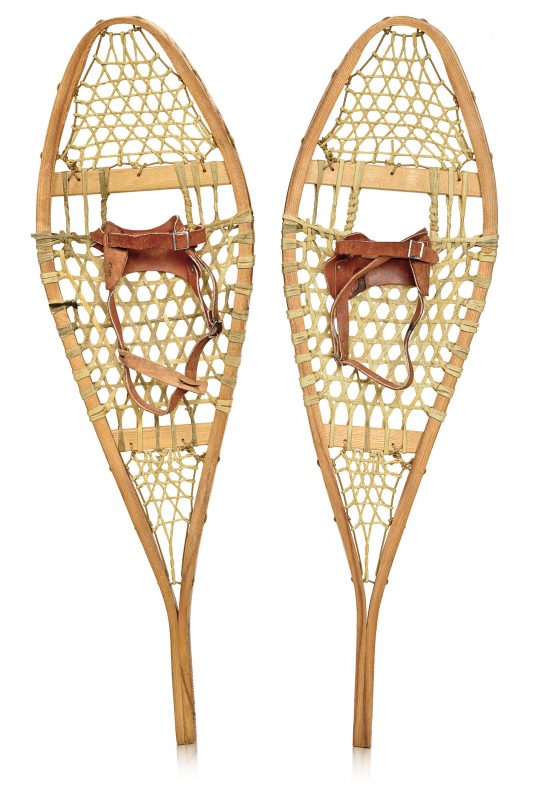
The basic idea of the snowshoe is a simple one: to spread your weight over a larger area so the snow can better support you.
How much you have to spread your weight out depends on a combination of how much you weigh and what kind of snow you are dealing with. Regardless of that combination, snowshoes will always improve your ability to walk in the snow.
Nobody knows for sure how long snowshoes have been in use, but anthropologists think the answer to that question is somewhere between 4,000 and 6,000 years.
The idea probably originated from looking at snowshoe hares and other animals that nature has adapted to survive in snowy environments. Their large feet keep them from sinking into the snow. As most ancient people were observers of nature, they would have learned the lesson.
Modern Snowshoes
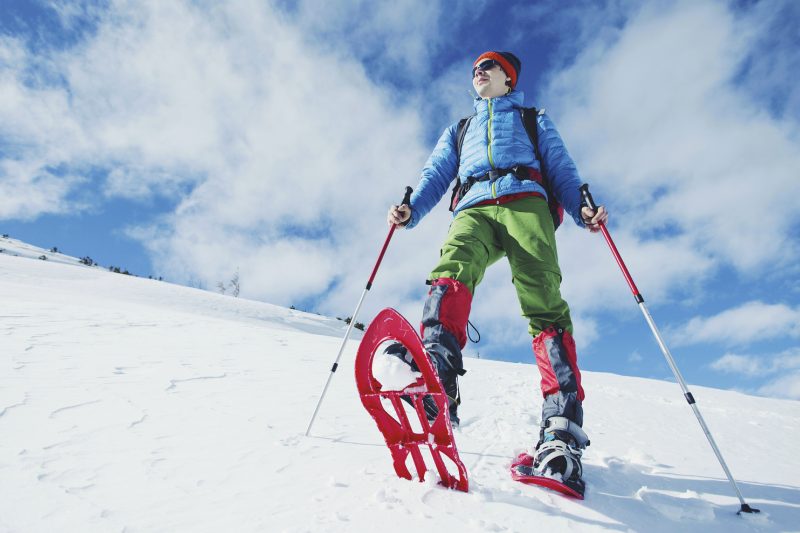
Snowshoes have evolved considerably since I first used them. Back then, the only snowshoes I ever saw were made of rawhide lacings stretched over a wood frame. While you can still buy this style of snowshoes today, they are expensive.
Few people use them because you can buy snowshoes which are much cheaper and made of fabric stretched over an aluminum frame.
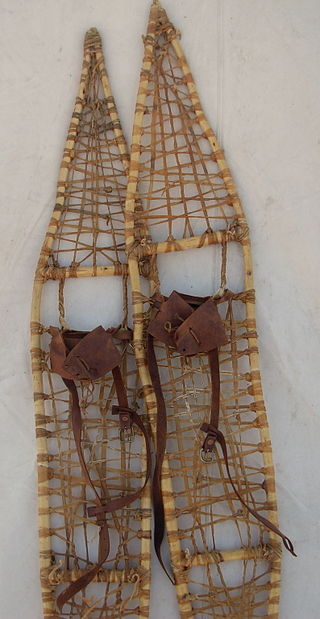
Walking with any kind of snowshoe takes a little getting used to as you have to walk slightly bow-legged to make up for the width of the shoes. It is always a good idea to use poles, much like ski poles, to help keep your balance. Most modern snowshoes you find on the market come complete with poles.
The Simplest Emergency Snowshoes
The simplest emergency snowshoes you can make are slabs of bark peeled off a tree and tied to the bottom of your shoes or boots. You need to use fresh bark for this and something that is fairly thick and stiff. Birch or aspen bark wouldn’t be a good choice as the bark on those trees are too thin and flexible. It has to be something that won’t bend or break when you put weight on it.
Of course, this sort of snowshoe is limited. You really can’t make them very big due to the lack of support to transfer your weight from the boot to the bark. A simple framework of sticks solves this problem by spreading your weight across the surface of the bark.
To make such a framework you’ll need four sticks: two longer ones to go the length of your foot, and two that are only about eight inches wide to go crosswise to your foot. Lash them together like a hashtag # using rawhide or paracord. Then tie the bark to them.
Only the toe of the boot should be tied to the snowshoe – about 1/3 of the distance back from the leading edge. This allows you to walk with a fairly normal, albeit bow-legged, stride. If you tie both the toe and heel, you have to keep your feet parallel to the ground when you lift them or you end up digging the toe of the snowshoe into the snow.
Making a Better Emergency Snowshoe
The big problem with using bark snowshoes is that they don’t last long. Bark is too dry and brittle. While they can be used in an emergency, you probably can’t walk a full day in them without them breaking, and you’d have to regularly replace the bark.
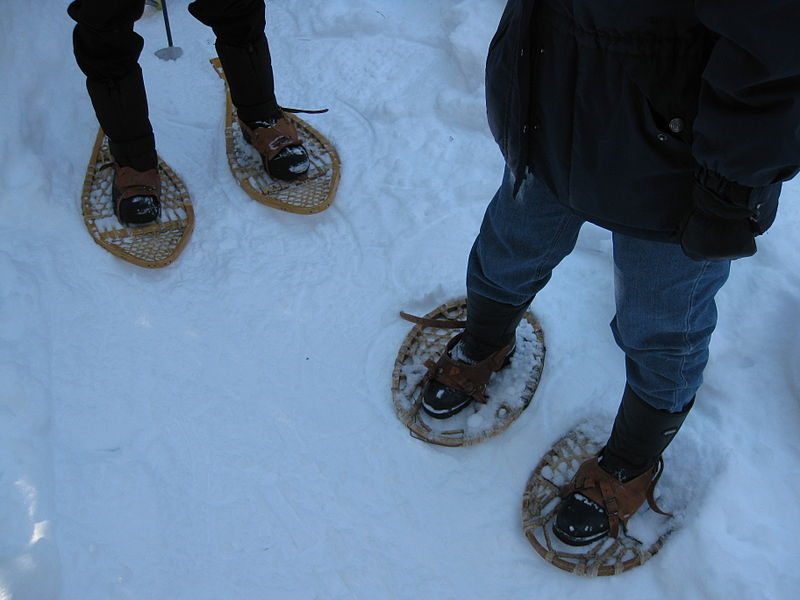
Fortunately, it’s not all that hard to make a better pair of snowshoes. To start, cut some supple saplings or long, thin branches. The branches of a willow tree are ideal for this. Heat them over the fire to make them flexible and then tie them either in a teardrop or oval shape about 30 inches long. The teardrop is more common, but for emergencies making an oval snowshoe is easier.
You’ll also need to cut some thin branches to act as crossbars to stand on. These will transfer your body weight to the framework you just made, as well as holding the oval or teardrop shape out so that it doesn’t collapse inwardly on itself.
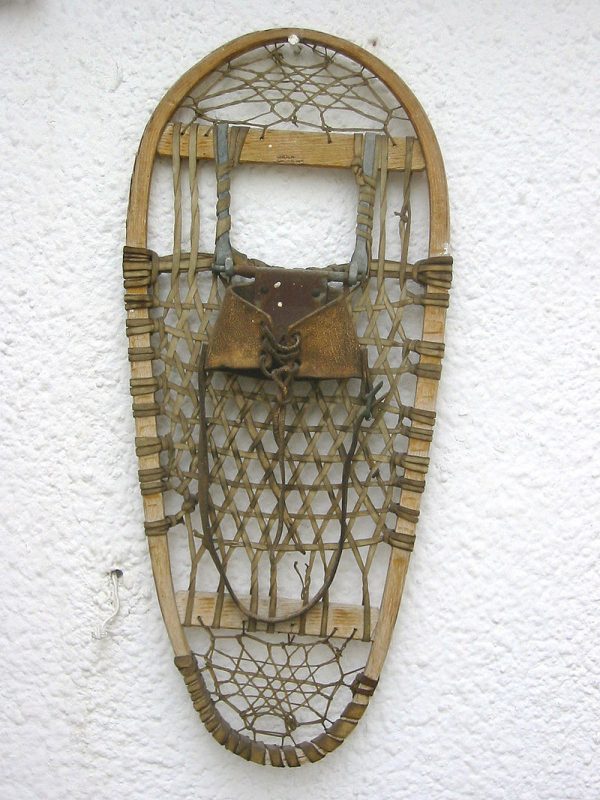
For a true emergency, a layer of branches from a pine tree can be tied to this framework to create the “web” that keeps the snowshoe from sinking into the snow.
But I’ll warn you, it’s very hard to walk on the snowshoes like this as they won’t have a flat bottom. Be sure to use poles for balance so that you don’t spend all your time sitting in the snow instead of walking on it.
The webbing for the snowshoes can be formed from either rawhide or paracord. The only problem is that you’re going to need a lot of it.
Ideally, you want the spaces between the webbing to be only about an inch so that the cordage doesn’t just push its way down into the snow. If you don’t have enough cordage, use grass or thin branchlets and reserve the cordage for those areas where you need to hold everything together. Of course, if you have rawhide you can use that.





